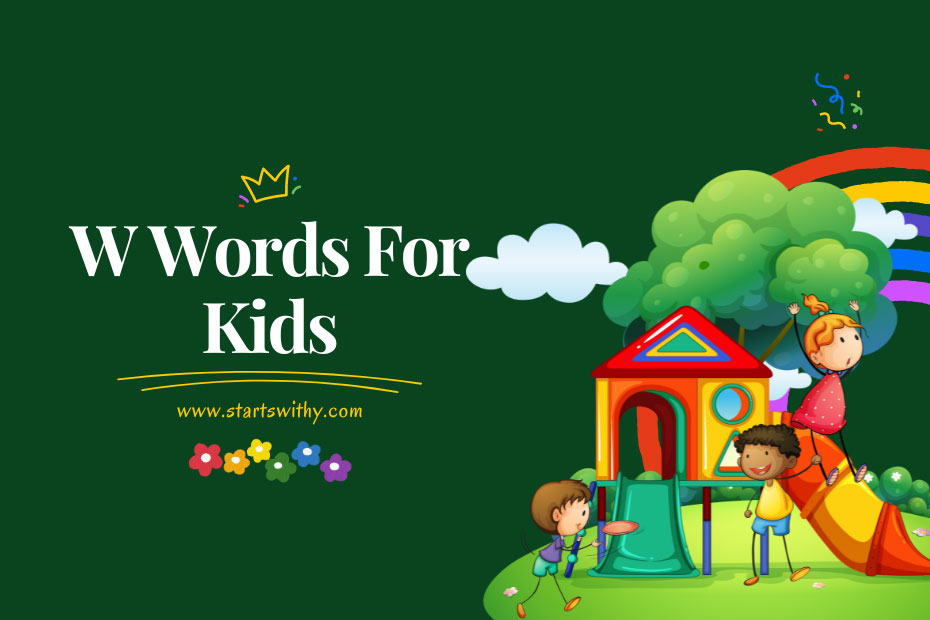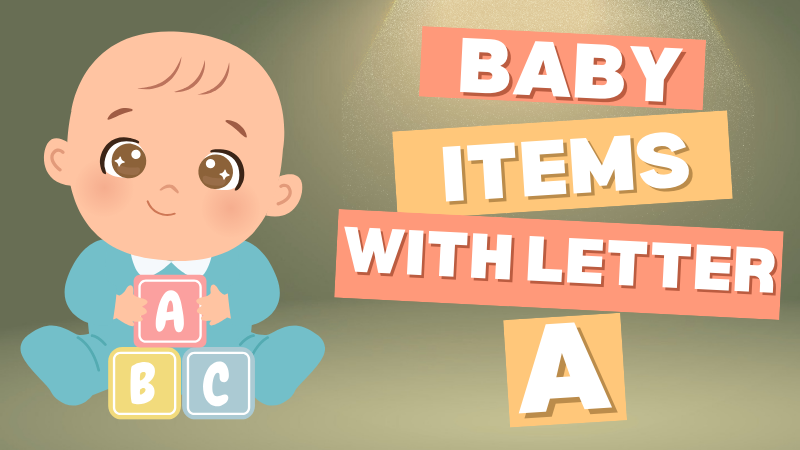Welcome to my article about W words for kids in Kindergarten and Preschool! As a seasoned educator, I know how important it is to introduce young learners to a wide range of vocabulary. In this article, I’ll be sharing some fun and engaging W words that will help expand your child’s language skills. From whimsical animals to wonderful words, we’ll explore a variety of topics that will captivate your little one’s imagination.
In Kindergarten and Preschool, children are at a crucial stage of language development. By introducing them to W words, we can help them build a strong foundation for reading and writing. Throughout this article, I’ll provide examples and activities that will make learning W words both enjoyable and educational. So, whether you’re a parent, teacher, or caregiver, get ready to dive into the world of W words with me!
Why W Words are Important for Kids
As an experienced educator, I understand the significance of introducing young learners in Kindergarten and Preschool to a wide range of vocabulary, including W words. In this section, I will discuss why W words are important for kids’ early literacy development and vocabulary expansion.
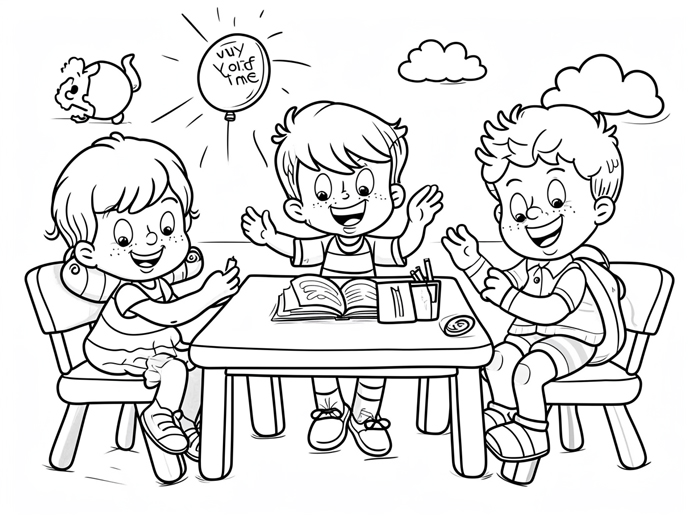
Early Literacy Development
When it comes to language skills, early literacy development plays a crucial role in preparing children for reading and writing. Building a strong foundation in literacy at a young age sets the stage for future academic success. Introducing W words to kids in Kindergarten and Preschool helps them develop essential phonemic awareness and phonics skills.
By focusing on W words such as “water,” “wind,” and “wave,” children learn to recognize and differentiate sounds in words. This phonemic awareness, combined with phonics instruction, fosters their ability to decode and read words accurately. As the children progress in their reading journey, their exposure to W words expands their fluency and comprehension skills.
Vocabulary Expansion
Expanding children’s vocabulary opens up a world of opportunities for effective communication and understanding. W words provide a rich resource for vocabulary development in young learners.
Introducing W words like “wonder,” “whisper,” and “wilderness” not only enhances children’s understanding of the world around them but also broadens their expressive and receptive language skills. The variety of W words engages children’s curiosity and imagination, encouraging them to explore different contexts and meanings.
A robust vocabulary not only supports children’s reading abilities but also enhances their writing skills. As they incorporate W words into their writing, children become more adept at expressing themselves creatively. Encouraging children to use descriptive W words like “wonderful,” “whimsical,” and “witty” in their stories promotes stronger language use and storytelling techniques.
To summarize, introducing W words to kids in Kindergarten and Preschool has significant benefits for their early literacy development and vocabulary expansion. By nurturing their phonemic awareness, phonics skills, and vocabulary knowledge, we set them on a path towards becoming confident readers, writers, and communicators.
Remember, learning should be enjoyable and educational. In the next section, I’ll share some fun examples and activities to make W word learning an engaging experience for young learners.
Preschool Words that Start with W
| Word | Sentence for Kids |
|---|---|
| Water | I love to splash in the water. |
| Whale | Look, it’s a big blue whale! |
| Worm | I found a wiggly worm outside. |
| Window | Let’s look out the window. |
| Wagon | Our red wagon is so much fun. |
| Watch | Can you tell me the time, watch? |
| Wiggle | Wiggle your fingers like this. |
| Wind | Feel the wind in your hair. |
| Wheel | Turn the wheel to steer the car. |
| Waffle | I want syrup on my waffle. |
4 Letter Words for Toddlers that Start with W
| Word | Sentence for Kids |
|---|---|
| Wind | Feel the gentle wind outside. |
| Wall | The colorful pictures hang on the wall. |
| Wink | Give me a wink and a smile. |
| Worm | Look at the tiny worm in the dirt. |
| Wave | Wave hello to your friends! |
| Wish | Close your eyes and make a wish. |
| Wolf | The big bad wolf in the story. |
| Walk | Let’s go for a walk in the park. |
| Well | Water comes from the deep well. |
| Wood | This toy is made of sturdy wood. |
| Wisp | A wisp of cloud in the sky. |
Words That Start With W For Kids
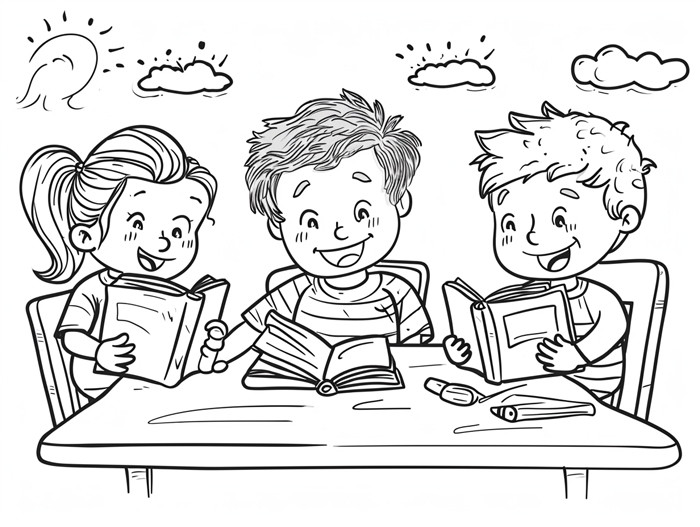
| Word | Sentence for Kids |
|---|---|
| Water | Splashing in the water is so much fun. |
| Whale | The whale is the king of the ocean. |
| Worm | Look at the wiggly worm in the dirt. |
| Wizard | The wizard can do magic tricks. |
| Wagon | Let’s go for a ride in the red wagon. |
| Wiggle | Wiggle your toes and giggle! |
| Wind | Feel the wind blow through your hair. |
| Wheel | Turn the wheel to steer the car. |
| Watch | I’ll watch over you while you sleep. |
| Winter | Winter brings snow and cozy fires. |
Science Words That Start With W
| Word | Sentence for Kids |
|---|---|
| Weather | Weather tells us if it’s sunny, rainy, or windy. |
| Water | Water is essential for life on Earth. |
| Wind | The wind makes the leaves dance in the trees. |
| Wave | A wave is like a friendly hello from the ocean. |
| Weathering | Rocks change over time due to weathering. |
| Wildlife | Let’s explore the forest and spot some wildlife. |
| Wormhole | In science fiction, a wormhole is a cool idea. |
| Weight | The weight of an object tells us how heavy it is. |
| Water Cycle | Learn about the water cycle, it’s fascinating. |
| World | The world is full of amazing places to discover. |
| White Blood Cells | White blood cells help keep us healthy. |
School Words that Start with W
| Word | Sentence for Kids |
|---|---|
| Write | Let’s learn how to write our name. |
| Workbook | Complete the workbook exercises. |
| Whiteboard | The teacher writes on the whiteboard. |
| Wagon | Bring your wagon for show-and-tell. |
| Walk | We walk to school every morning. |
| Window | Look out the window during class. |
| Wall | The colorful art hangs on the wall. |
| Worksheet | Fill out the worksheet neatly. |
| Wordsearch | Play a wordsearch puzzle for fun. |
| Welcome | Welcome to our school, new friends! |
Cool Words that Start with W For Kids
| Word | Sentence for Kids |
|---|---|
| Whirlwind | The whirlwind of leaves spun around us. |
| Wild | Let’s go on a wild adventure in the forest. |
| Wizardry | The magician’s wizardry amazed the crowd. |
| Waterfall | The waterfall was a breathtaking sight. |
| Wave | We can wave to our friends from the bus. |
| Wonder | Science is full of wonders to explore. |
| Warrior | Be a brave warrior in your imagination. |
| Wobble | The penguin tried not to wobble on the ice. |
| Whimsical | The whimsical clown made us all laugh. |
| Whisper | We need to whisper in the library. |
| Wondrous | The night sky is filled with wondrous stars. |
Positive Words that Start with W for Kids
| Word | Sentence for Kids |
|---|---|
| Wonderful | Today is a wonderful day to have fun. |
| Wise | Be wise and make good choices. |
| Winner | You are a winner in everything you try. |
| Warm | A warm hug from a friend feels so nice. |
| Welcome | We welcome new friends with open arms. |
| Witty | Your witty jokes always make us laugh. |
| Wholesome | Eating fruits and veggies is wholesome. |
| Willing | Be willing to help others in need. |
| Wishful | Make wishful dreams and watch them come true. |
| Wise | Wise owls are known for their wisdom. |
| Wonder | Explore the world with a sense of wonder. |
Activities to teach W words to kids
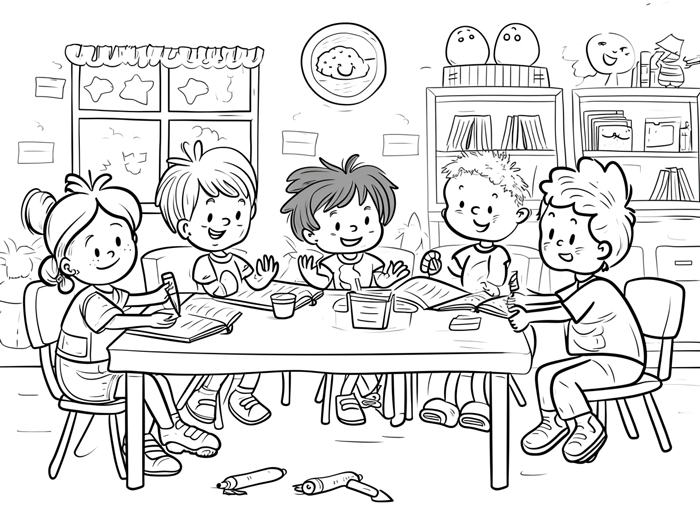
As a teacher in Kindergarten or Preschool, I understand the importance of making learning fun and engaging for young learners. One effective way to help children expand their vocabulary and develop literacy skills is by focusing on W words. Here are a few activities that can make learning W words enjoyable and educational for kids:
Word picture matching game
In this activity, I’ll prepare a set of word cards with various W words, such as “water,” “worm,” and “wind.” I’ll also need corresponding picture cards for each word.
Here’s how the game works:
- I’ll spread out the word cards in front of the children, making sure they are facedown.
- One by one, I’ll turn over a picture card and ask the children to identify the object in the picture.
- The children will then choose the word card that matches the object and place it next to the picture card.
- We’ll continue the game until all the picture cards are matched with their corresponding word cards.
By playing this interactive game, children will not only learn to associate the W words with their visuals but also practice their reading and word recognition skills.
W word scavenger hunt
Another exciting activity to reinforce W words is a scavenger hunt. This game allows children to actively search for objects that start with the letter W. Here’s how to organize the scavenger hunt:
- I’ll create a list of W words, such as “window,” “watch,” and “wagon.”
- I’ll divide the children into small teams, ensuring that each team has a responsible adult to supervise.
- I’ll give each team a copy of the W word list and explain the rules of the game.
- The teams will then go around the classroom or designated area, searching for objects that match the words on their list.
- Once a team finds an object, they’ll take a picture or bring the object back to the starting point to show the other teams.
- The team that finds the most objects within a set time limit will be declared the winner.
Through this scavenger hunt, children will actively engage with W words and improve their observational skills while having a blast.
W word flashcards
Flashcards are an effective tool for teaching vocabulary to young children. In this activity, I’ll create a set of flashcards featuring different W words. Here’s how to use them:
- I’ll show one flashcard at a time and introduce the word to the children, pronouncing it clearly.
- I’ll encourage the children to repeat the word after me, emphasizing its initial W sound.
- I’ll ask the children to come up with sentences or phrases using the word on the flashcard.
- To make the activity interactive, I can encourage the children to take turns showing the flashcards to their classmates and leading the discussion.
This flashcard activity allows children to practice their pronunciation and build their vocabulary with W words in an engaging and interactive way.
By incorporating these activities into my teaching, I can create a fun and enriching environment for children to learn W words. These activities will not only enhance their vocabulary but also foster their love for reading and language.
Tips for Teaching W Words Effectively
Make it Fun and Engaging
When teaching W words to young learners, it’s important to make the process fun and engaging. Here are some tips to accomplish this:
- Create interactive games: Incorporate word picture matching games or word scavenger hunts, where children have to find objects that start with the letter W. This not only reinforces the word association, but also adds an element of excitement to the learning process.
- Sing and dance: Utilize songs or rhymes that emphasize words starting with W. Encourage children to wiggle, move, and dance while singing, making the learning experience more enjoyable and memorable.
- Use technology: Incorporate educational apps or online resources that provide interactive activities centered around W words. This not only makes the learning experience more dynamic, but also appeals to children’s digital literacy skills.
Use Visuals and Props
Visual aids and props can greatly enhance the learning experience for children. Here’s how you can utilize them when teaching W words:
- Flashcards: Use flashcards with visuals depicting W words. Display them prominently in the classroom to reinforce word recognition and association.
- Real-life objects: Bring in objects from the real world that start with the letter W. For example, you can introduce a toy whale or a picture of a watermelon. This hands-on approach helps children connect abstract words with concrete representations.
Repeat and Reinforce
Repetition is key when it comes to teaching W words effectively. Here are some strategies to help reinforce these words:
- Consistent practice: Incorporate W words into daily routines and activities. For example, during circle time, have children practice saying and spelling W words. Encourage them to use these words in sentences throughout the day.
- Word walls: Create a word wall in the classroom dedicated to W words. Displaying words prominently helps children see and use them in context regularly.
- Review and reinforce: Regularly review previously taught W words to ensure retention. Include these words in future lessons and activities to reinforce learning.
W Words for Kindergarten Kids
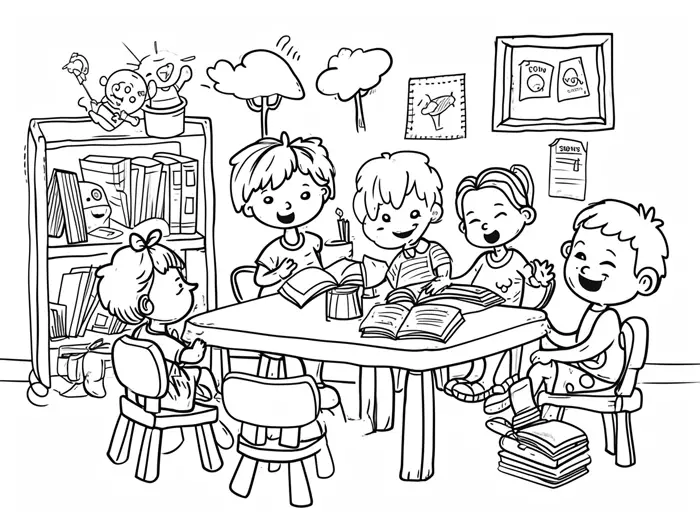
As a teacher, I believe that introducing words starting with “w” to Kindergarten kids can be a fun and engaging learning experience. Here are some effective ways to teach and reinforce these words:
Words starting with “w”
- Whale: Show a picture or use a prop of a whale to introduce this word. Discuss its size, habitat, and distinctive features. Engage the children by making whale sounds and encouraging them to imitate.
- Watermelon: Use a real watermelon as a prop and let the kids explore its texture and smell. Talk about the color, taste, and how it grows. You can even have a watermelon tasting session to make it more interactive.
- Walrus: Show a picture or use a stuffed toy of a walrus. Discuss its unique features such as tusks and flippers. Encourage the kids to mimic the movement of a walrus by pretending to swim or slide on their bellies.
Words ending with “w”
- Bow: Introduce the word “bow” by showing different types of bows, like the ones used for tying shoelaces or tying a ribbon. Teach the kids to make a simple bow and have them practice tying it.
- Cow: Use a picture or a toy cow to introduce this word. Talk about where cows live, what they eat, and the sounds they make. You can also play a cow sound and ask the kids to identify it.
- Saw: Show a picture or use a toy saw to introduce this word. Talk about how saws are used to cut wood and other materials. You can even demonstrate how a saw works on a soft material like playdough or cardboard.
Words with “w” in the middle
- Pillow: Show a picture or ask the children to bring their own pillows to class. Talk about how pillows are used for sleeping or resting. Encourage the kids to describe their pillows using words like soft, fluffy, or colorful.
- Window: Point out the windows in the classroom and discuss their purpose. Talk about how windows let in light, allow us to see outside, and can be opened or closed. Encourage the kids to share what they can see through the windows.
- Newspaper: Show a picture of a newspaper or bring in a newspaper to show the kids. Talk about how newspapers are used to share news and information. You can even have a discussion about the different sections of a newspaper, like sports, weather, and comics.
By incorporating these activities and discussions into your lessons, you can make learning W words enjoyable and memorable for Kindergarten kids. Remember to provide plenty of opportunities for practice and reinforcement to help them retain these words. Keep the learning experience interactive, engaging, and tailored to the abilities and interests of your students.
W Words for Preschool Kids
As a teacher, I know how important it is to introduce and reinforce words in an engaging and interactive way, especially for preschool kids. Today, I want to share some tips and activities to help you teach W words effectively to your young learners.
Simple W Words
Let’s start with some simple W words that your preschoolers will find easy to grasp. These words are great for vocabulary building and can be incorporated into various activities:
- Water: Talk about water and its different forms. Show them pictures or videos of water in different settings like lakes, rivers, and the ocean. You can even bring a small container of water to the classroom and let the kids observe it closely.
- Walk: Take your students for a walk around the school or in a nearby park. Encourage them to observe their surroundings and point out things that start with the letter W, such as walls, windows, or even worms!
- Wiggle: Play some fun songs that encourage movement and dancing. Encourage your preschoolers to wiggle and dance along while chanting the word “wiggle”. This will help them associate the word with a physical action.
W Words with Blends
Let’s move on to W words with blends. These words can be a bit more challenging for preschoolers, but with the right activities, they can become familiar with them:
- Swim: Create a pretend swimming pool in your classroom using a blue sheet or blanket. Let the kids pretend to swim while saying the word “swim”. You can also introduce words like “swimming” or “swimmer” to expand their vocabulary.
- Twist: Teach your students the action of twisting by using a twist tie or a rubber band. Show them how to twist it and pronounce the word “twist” as they do it. You can also provide a variety of objects that can be twisted, like pipe cleaners or twisty straws.
- Twinkle: Engage your preschoolers in a discussion about stars and their twinkling lights. Show them pictures of stars and ask them to describe how they look and the sound “t” makes. Encourage them to say the word “twinkle” while imagining the stars in the sky.
W Words with Digraphs
Lastly, let’s explore W words with digraphs. These words contain two letters that make one sound, making it a slightly more advanced concept for preschoolers. However, with repetitive practice, they can become comfortable with these words:
- Whale: Show your students pictures or videos of whales and discuss interesting facts about them. Practice saying the word “whale” together and encourage your preschoolers to imitate the sounds that whales make, like the sound of blowing air through a blowhole.
- Wheel: Bring a toy car or a bike to the classroom to demonstrate the concept of wheels. Encourage your preschoolers to touch and rotate the wheels while saying the word “wheel”. You can also show them pictures of different vehicles with wheels to expand their understanding.
- Whisper: Guide your preschoolers in practicing whispering by creating a whispering game. Ask them to whisper a word and have their classmates guess what they said. Emphasize the sound “w” makes when whispering and encourage them to say the word “whisper” softly.
Conclusion
Teaching W words to preschool kids can be a fun and interactive experience. By using simple words like water, walk, and wiggle, we can introduce these words in a way that captivates their attention and encourages their participation. Incorporating activities that involve movement and exploration, such as going on a nature walk or playing with water, can help reinforce these words in a hands-on way.
As preschoolers become more familiar with W words, we can introduce words with blends like swim, twist, and twinkle. By engaging them in activities that involve actions and sounds associated with these words, we can further enhance their understanding and retention.
For those ready to tackle more advanced W words, digraphs like whale, wheel, and whisper can be introduced. By providing activities that focus on the unique sounds and spellings of these words, we can help preschoolers practice and comprehend these more complex words.
Overall, the goal is to make learning W words engaging and interactive for preschool kids. By incorporating a variety of activities and gradually introducing more challenging words, we can create a positive and enjoyable learning experience that lays a strong foundation for their language development.
